Explore these top Valencia attractions
In this post, we explore these top Valencia attractions around the city from the Old Town historic sites, markets and landmarks to the newer parts of the city of Arts and Sciences to the fantastic beach and harbor areas of the city to visit. We create this easy guide below to highlight all the must do sites and some off the beaten venues to also visit and have a unique experience.
Of all the fantastic cities to visit in Spain, I think that visiting Valencia, it’s many attractions and top things to do is so satisfying and a totally fun experience. Valencia for me is an easy city to explore with many walking only promenades that get you to visit the major attractions easily without having to deal with city traffic. My favorite way to explore this city is to rent a bike all day long and see many of the popular sites easily and in a healthy way and stopping anywhere that looks appealing. You can easily rent bikes through the local tourism sites or using the popular Valenbisi bike rental system. If not walking around is also an easy to do option and the compact nature of the Old Town makes it easy to visit many of the attractions that are concentrated in the historic district.
Valencia is a city that blends old-world charm with cutting-edge design, offering a fresh take on Spanish culture by the Mediterranean. You’ll wander from the grand Gothic architecture of its Old Town to the ultra-modern City of Arts and Sciences, and it all feels surprisingly easy to explore. Historic markets buzz with local flavors, orange trees line sunlit plazas, and a day can start with Roman ruins and end with dinner by the beach. Whether you’re here for food, art, history, or simply the laid-back vibe, Valencia draws you in with just the right balance of tradition and flair.
I’m sharing my favorite and top places to visit around Valencia for inspiration and attractions you can pick and choose which site or activity that hits your interest and must do list when visiting the city.
Valencia attractions: Explore the best of the city, historic and cultural sites, markets, cuisine and unique things to do in the city
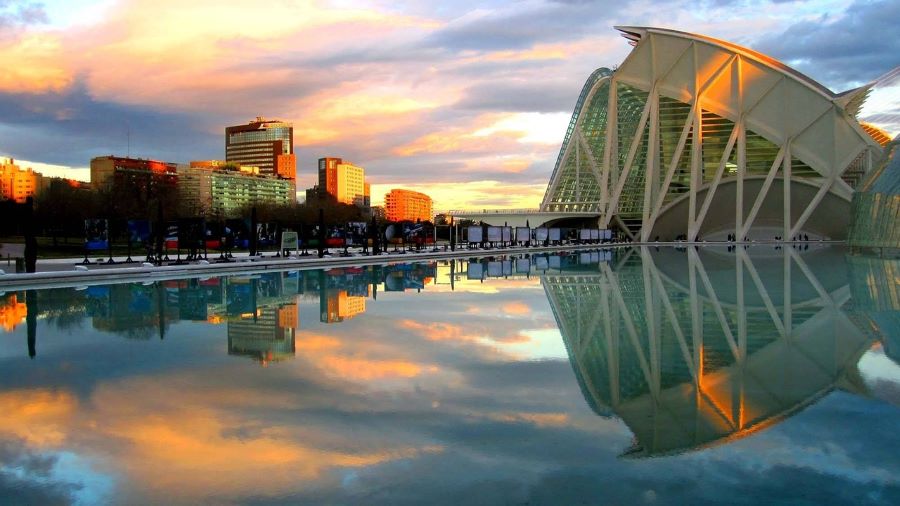
Why visit Valencia now?
Valencia is one of those places that feels both relaxed and alive at the same time, I feel like it definitely is a place for locals to enjoy and visitors to also experience the best parts of this city’s history, culture, food and attractions. Right now is a great moment to visit—there’s warm weather without the extremes of peak summer, and the city has a more local rhythm before the high-season rush. You can wander through its historic old town, enjoy long lunches on sunny terraces, and bike through the Turia gardens all in a single day. The beaches are already pleasant, markets like Mercado Central are buzzing with fresh produce, and cultural spots like the City of Arts and Sciences have fewer lines. Whether you’re into food, design, festivals, or just slowing down by the sea, Valencia offers a sweet spot between city energy and coastal calm.

How to get to Valencia, Spain
Here’s the best way to get to Valencia, Spain, including options by air, train, bus, and car:
I. By Air (Flying to Valencia)
A. International Flights
- Fly into Valencia Airport (VLC) – located ~8 km from the city center.
- Direct international flights from major European cities (e.g., London, Paris, Rome, Frankfurt).
- For travelers from the US, Canada, Asia, or Latin America:
- Fly into Madrid (MAD) or Barcelona (BCN), then take a domestic flight to VLC.
B. Domestic Flights
- Regular short-haul flights from major Spanish cities (e.g., Madrid, Barcelona, Seville).
II. By Train
A. High-Speed Rail (Renfe AVE and Euromed)
- From Madrid: ~1 hour 45 minutes via AVE
- From Barcelona: ~3 hours via Euromed or Intercity
- Trains arrive at Estació del Nord or Joaquín Sorolla Station
B. Booking Tips
- Book through Renfe for best rates
- Advance tickets can be cheaper
III. By Bus
A. Long-Distance Bus Services
- Alsa and Avanza operate routes from across Spain and some European cities
- Example routes:
- Madrid to Valencia: ~4.5–5 hours
- Barcelona to Valencia: ~4.5 hours
B. Bus Station
- Buses arrive at Estación de Autobuses de Valencia, near the Turia metro station
IV. By Car
A. From Major Spanish Cities
- Madrid to Valencia: ~3.5–4 hours via A-3 motorway
- Barcelona to Valencia: ~3.5–4.5 hours via AP-7 highway
B. Car Rentals
- Available at airports and major train stations
- Tolls on some highways (especially AP-7)
V. Other Travel Options
A. Rideshare
- BlaBlaCar offers shared rides between cities at budget prices
B. Cruise or Ferry
- Limited: some Mediterranean cruise ships stop in Valencia’s port
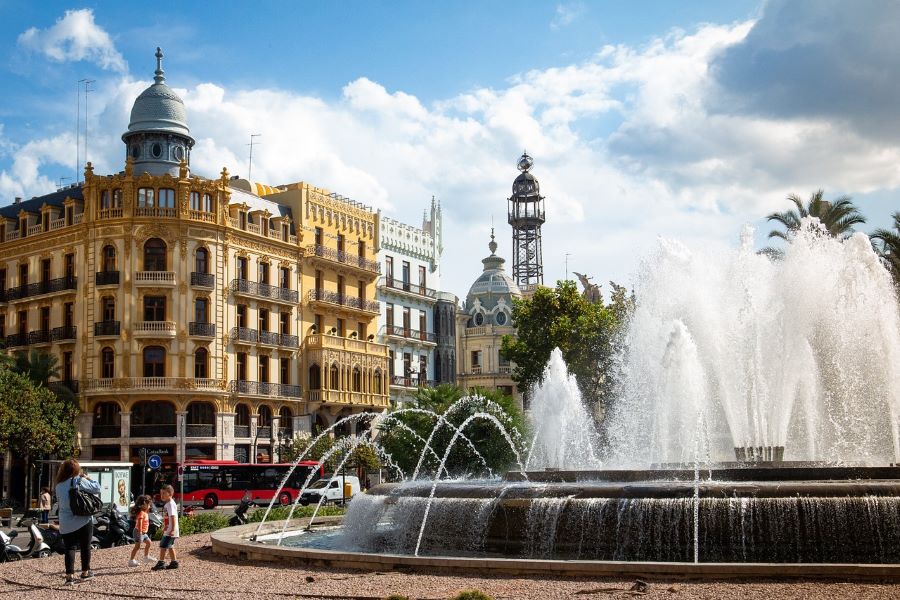
Weather and best time to visit Valencia
This is totally based on your own travel time, but knowing what to expect during the seasons here in Valencia will give you a good overview of what the typical weather patterns are like visiting the region.
I. Overview of Valencia’s Climate
A. Type
- Mediterranean climate
- Mild, wet winters and hot, dry summers
B. Annual Averages
- Temperature: ~12°C (54°F) in winter to ~30°C (86°F) in summer
- Rainfall: Most rain falls in autumn and spring
II. Season-by-Season Breakdown
A. Spring (March–May)
- Weather: Mild and sunny; temperatures ~15–24°C (59–75°F)
- Rain: Occasional showers, especially March/April
- Events:
- Las Fallas Festival in March (huge draw)
- Best for: Cultural events, comfortable sightseeing
B. Summer (June–August)
- Weather: Hot and dry; temperatures often 28–34°C (82–93°F)
- Sea: Warm and ideal for swimming
- Crowds: High tourist season
- Best for: Beach lovers, nightlife, festivals
C. Autumn (September–November)
- Weather: Warm early on, cooling by November
- Rain: September and October see more rainfall
- Best for: Fewer crowds, lower prices, good weather in early fall
D. Winter (December–February)
- Weather: Mild; temperatures ~10–18°C (50–64°F)
- Rain: Light, infrequent
- Crowds: Low season
- Best for: Budget travelers, quieter experiences, city walks
III. Best Time to Visit
A. Ideal Months
- March (for Las Fallas and pleasant weather)
- April–June (before summer heat and crowds)
- September–October (still warm, fewer tourists)
B. Avoid (if possible)
- August: very hot, crowded, and some locals leave the city
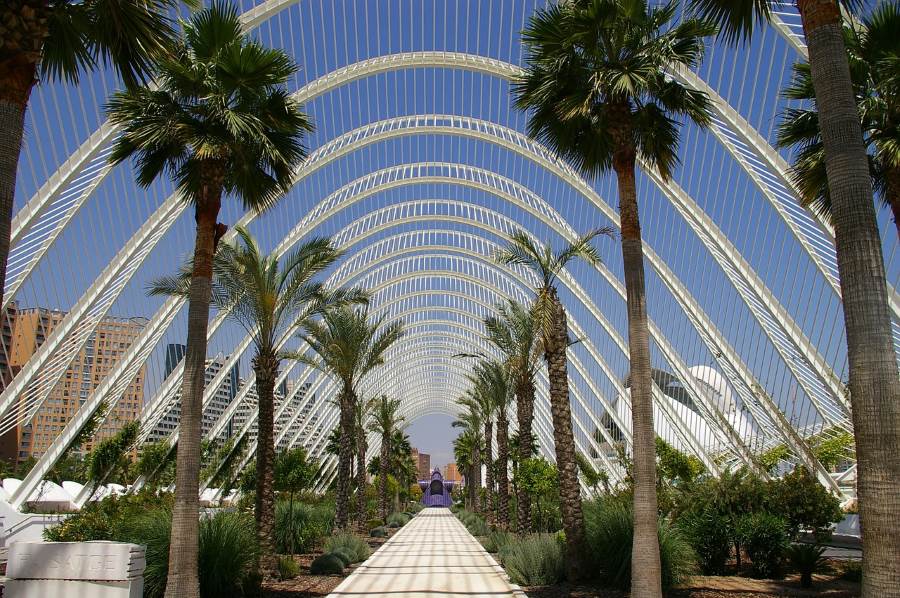
Check out the top things to do around Valencia
Here’s a rundown of the most important historic, cultural sites along with fun activities and other places worth visiting around the city.
I. Explore the Historic Center
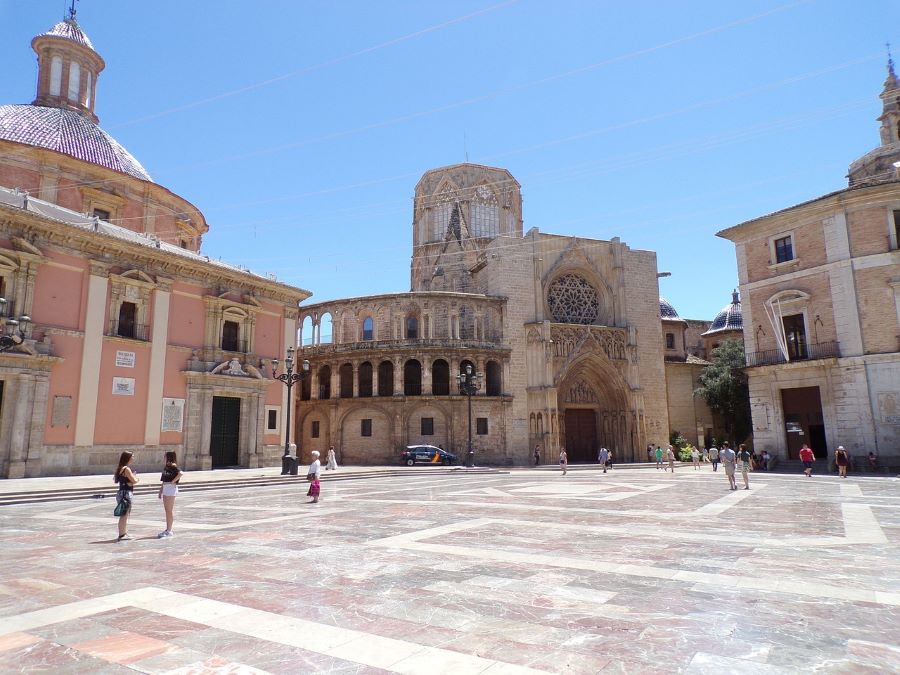
A. Valencia Cathedral
Valencia Cathedral sits in the heart of the old town and blends Romanesque, Gothic, and Baroque architecture in a way that reflects the city’s layered history. It’s most famous for housing what many believe to be the Holy Grail, displayed in a quiet chapel that draws both pilgrims and curious visitors. Climbing the Miguelete Tower is a must—after 207 narrow steps, you’re rewarded with sweeping views over the rooftops of Valencia. Around the cathedral, the surrounding plazas—Plaza de la Virgen and Plaza de la Reina—are perfect for people-watching, with fountains, flower stalls, and open-air cafes that give the area a laid-back, inviting atmosphere. Whether you’re into history, architecture, or just want to soak in the city’s vibe, this is a great place to start.
Cathedral (Cultural Visit) information
- Monday–Friday: 10:30 AM – 6:30 PM (last entry at 5:30 PM)
- Saturday: 10:30 AM – 5:30 PM (until 6:30 PM during July–September; last entry 4:30 or 5:30 depending on month)
- Sunday & Public Holidays: 2:00 PM – 5:30 PM (last entry 4:30 PM)
Official holidays when it’s closed include Jan 1, Jan 6, Mar 19, Palm Sunday, Good Friday, Oct 9, Dec 8, and Dec 25. (visitvalencia.com, en.northleg.com)
Cathedral Entry Fees
- General Admission: €9
- Reduced: €6 (pensioners, disabled, and children up to 12)
- Discount: 20% off with Valencia Tourist Card (not valid for Miguelete) (visitvalencia.com)
Miguelete Tower (Bell Tower)
- Open Daily: 10:00 AM – 6:45 PM (last entry 45 minutes before closing)
- Entry Fee: €2 (with reduced rates for certain groups) (en.northleg.com)
- Cathedral Visit includes access to the nave, the Chapel of the Holy Chalice, the Cathedral museum, and an audio guide via QR or in-person.
- Climbing the 207‑step Miguelete Tower rewards you with panoramic 360° city views. (visitvalencia.com)
Tips:
- Try to visit midweek or early morning to avoid crowds.
- Combine your tickets smartly: pop into the Cathedral first, then head up the tower for the full experience.
- Climb the Miguelete Tower for panoramic views
- See the Holy Grail (claimed to be the original)
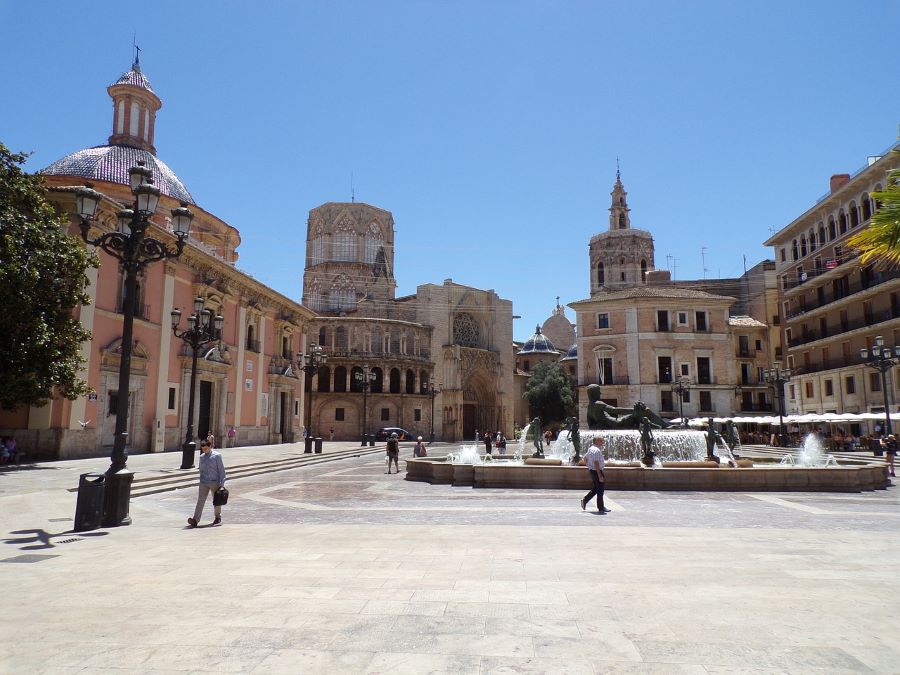
B. Plaza de la Virgen & Plaza de la Reina
Plaza de la Virgen and Plaza de la Reina are two of the most iconic and lively squares in Valencia’s historic center, each offering a different feel but flowing naturally into one another. Plaza de la Virgen, with its centerpiece fountain of Neptune and surrounding historic buildings, has a more relaxed, old-world charm—perfect for sitting at a café and watching street performers or evening strollers pass by. It’s framed by landmarks like the Valencia Cathedral and the Basílica de la Virgen de los Desamparados, an important religious site for locals. Just around the corner, Plaza de la Reina is a bit busier and brighter, known for its flower stalls, horse-drawn carriages, and plenty of terrace restaurants. It also serves as the main entrance to the cathedral and the base of the Miguelete Tower. Both squares offer a great mix of architecture, atmosphere, and local life, making them essential stops when exploring the old town.
I love visiting these squares at night when they become alive with restaurants spreading out their tables, street performers and enjoying all the people watching and activity happening around the squares, it’s a magical experience to be out having a meal, walking around or just enjoying the vibe in either plaza.
- Lively squares with cafes, fountains, and historic buildings
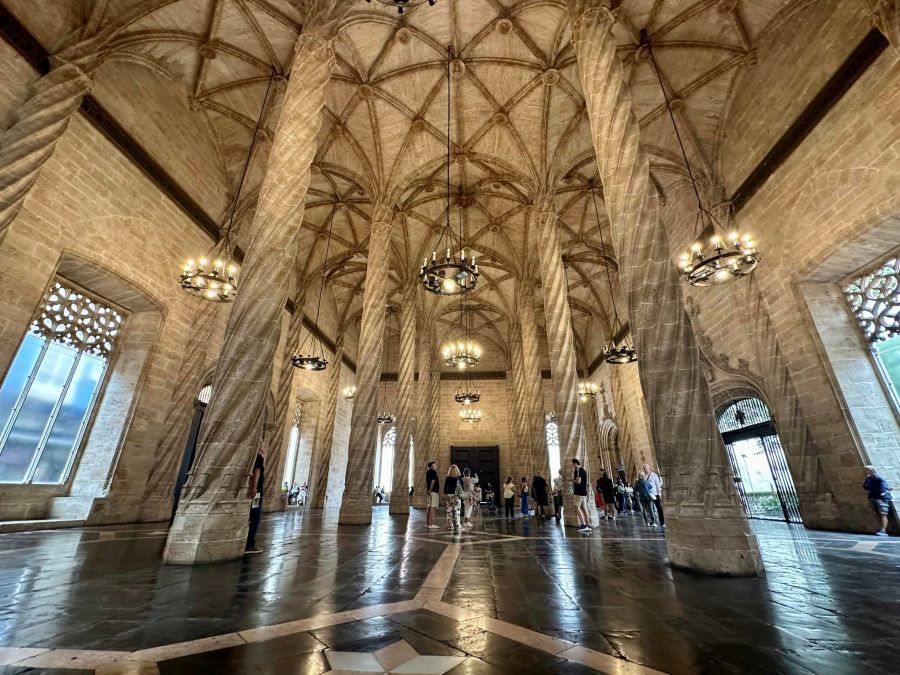
C. La Lonja de la Seda (Silk Exchange)
La Lonja de la Seda, or the Silk Exchange, is one of Valencia’s most impressive historic buildings and a UNESCO World Heritage Site that reflects the city’s economic power during the late Middle Ages. Built in the late 15th century, it’s a masterpiece of civil Gothic architecture, with towering stone columns that spiral upward like twisted rope and a grand main hall that once hosted merchants from across Europe. The building was originally used for trading silk and other goods, symbolizing Valencia’s status as a major Mediterranean trading hub. Walking through its echoing halls and quiet courtyards gives you a real sense of the city’s past wealth and ambition. It’s an easy and worthwhile stop while exploring the old town, especially for architecture lovers or anyone curious about Valencia’s role in global trade history.
Hours:
- Monday to Saturday: 10:00 AM – 7:00 PM
- Sundays and Holidays: 10:00 AM – 2:00 PM
Admission:
- General admission: €2
- Reduced admission (students, seniors): €1
- Free entry on Sundays and public holidays
Address:
La Lonja de la Seda
Carrer de la Llotja, 2,
46001 Valencia, Spain
- UNESCO World Heritage Site
- Stunning Gothic architecture
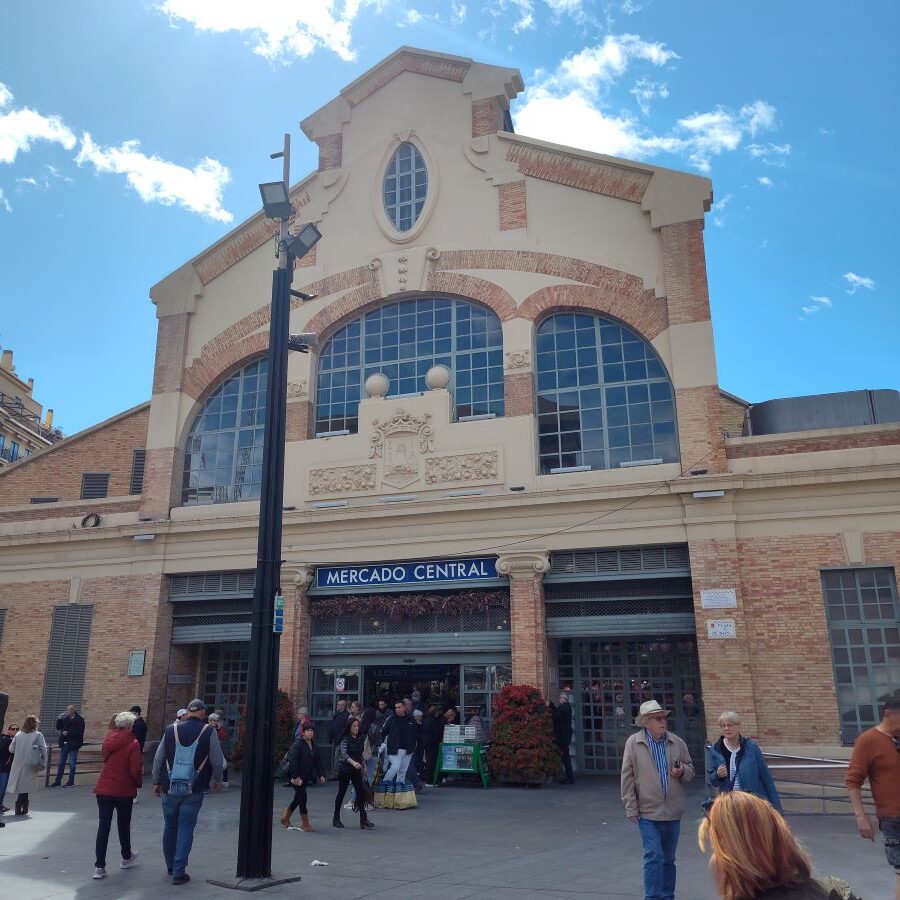
D. Mercado Central / Central Market of Valencia
The Mercado Central, or Central Market of Valencia, is one of the oldest and largest indoor markets in Europe, housed in a striking modernist building with stained glass, ironwork, and a soaring dome that fills the space with natural light. Inside, more than 1,000 stalls offer everything from fresh seafood, cured meats, and local cheeses to seasonal fruits, vegetables, and artisan products. It’s not just a place to shop—it’s a full sensory experience and a snapshot of daily Valencian life, with vendors calling out orders and locals picking up ingredients for lunch. You can snack on jamón, grab a fresh juice, or pick up saffron and other regional ingredients. For food lovers, it’s a great way to explore the flavors of the region and connect with the city’s culinary culture in a very real, local way.
Located right in the city center, I made this my typical first stop visiting Valencia to find some amazing specialty foods, produce and vendors to explore in this expansive marketplace, one of the largest in Spain.
📍 Address
- Plaça de la Ciutat de Bruges, s/n, 46001 València, Spain (mercadocentralvalencia.es)
🕒 Opening Hours
- Monday – Saturday: 07:30 – 15:00 (mercadocentralvalencia.es)
- Sunday & public holidays: Closed
📞 Contact Info
- Phone: +34 963 829 100 (mercadocentralvalencia.es)
- Email: [email protected] (mercadocentralvalencia.es)
💡 Quick Tips
- Best visited early in the morning, as stalls (especially fish and meat) start closing before 15:00
- Free entry—you only pay for what you buy
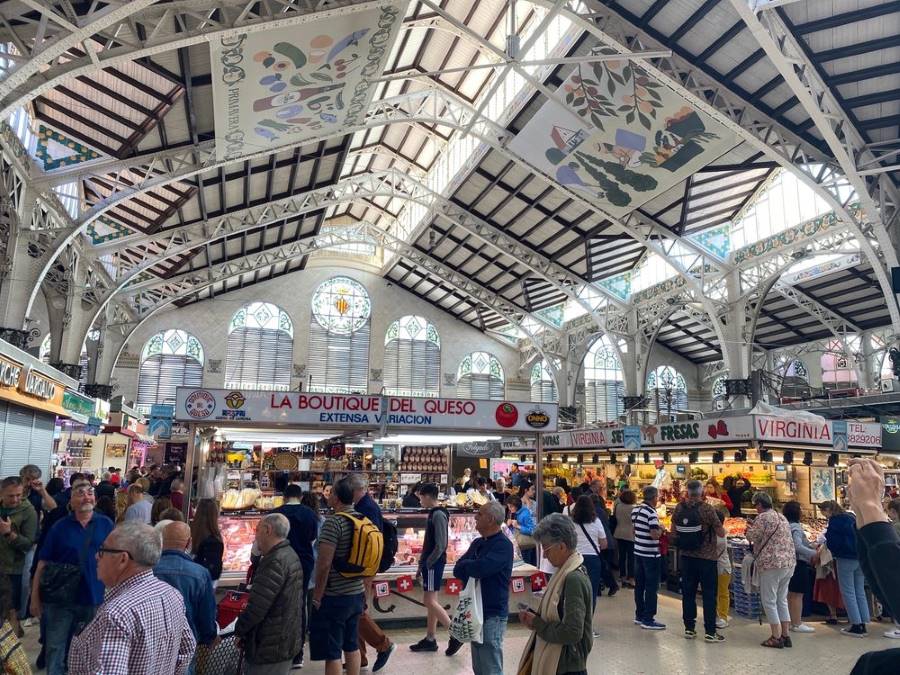
Interior views of the Mercado Central and beautifully designed stalls.
II. Discover the City of Arts and Sciences
The City of Arts and Sciences is one of Valencia’s most striking and modern landmarks, a futuristic complex that stretches along the former Turia riverbed. Designed by architect Santiago Calatrava, it’s a cluster of white, curved structures that almost look like something out of a sci-fi film. The site includes several major attractions: the Oceanogràfic, Europe’s largest aquarium; the Science Museum, which is packed with interactive exhibits; the Hemisfèric, an eye-shaped IMAX cinema and planetarium; and the Palau de les Arts, an opera house and performance venue. The surrounding pools and open spaces make it just as appealing to walk around as to go inside. Whether you’re interested in design, science, marine life, or photography, this part of the city offers something visually and culturally engaging.
This area is expansive so renting a bicycle to get around the park area and landmarks is the ideal way to explore the area completely and even get some exercise in which I think is a win win situation.
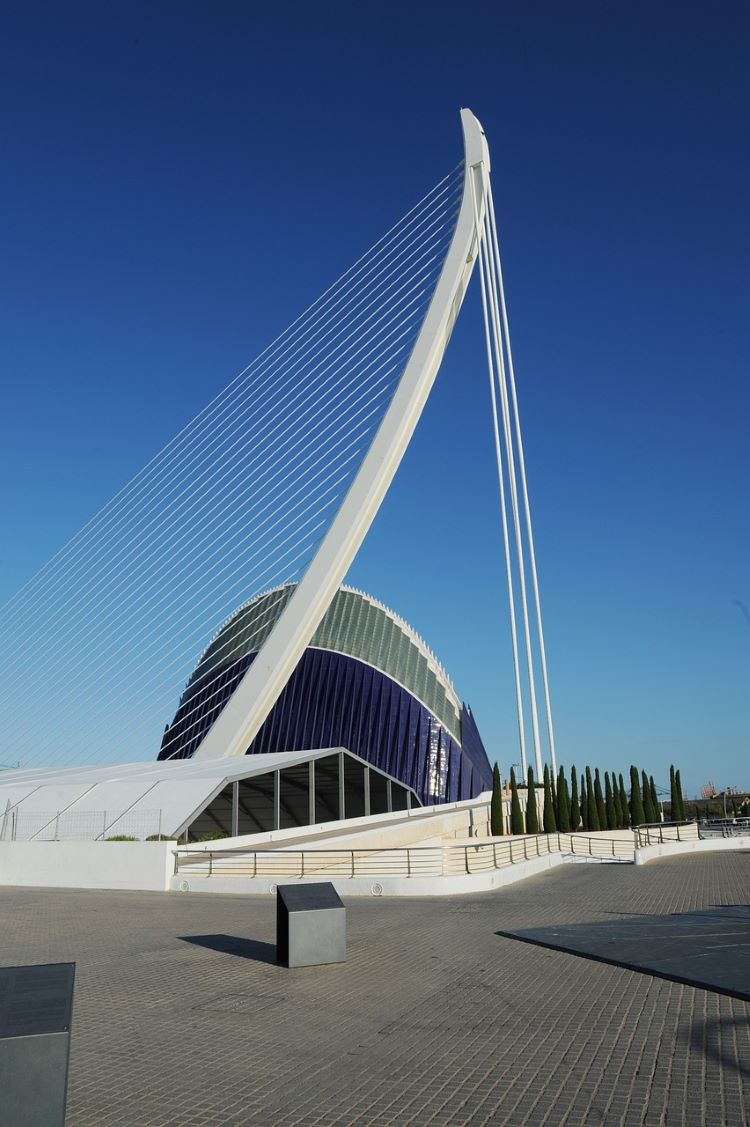
A. Architecture & Design
The architecture and design of the City of Arts and Sciences are inspired by natural forms and futuristic concepts, creating a space that feels both otherworldly and fluid. Santiago Calatrava, a Valencia-born architect known for his sculptural style, drew on organic shapes—like the human eye, skeletons, and marine life—to craft buildings that are as much artistic statements as they are functional spaces. The white concrete and glass structures curve, tilt, and reflect in surrounding pools, creating dynamic visuals from every angle, especially at sunrise or sunset. This approach turns the entire complex into an open-air gallery of movement and symmetry, where design invites interaction rather than just observation. It’s a bold departure from the city’s historic core and a symbol of Valencia’s modern identity.
- Designed by Santiago Calatrava
- Futuristic complex with white curved buildings

B. Top Attractions to visit
Inside the City of Arts and Sciences, each attraction offers a unique experience that blends education, entertainment, and design. The Oceanogràfic is the standout for many visitors—it’s the largest aquarium in Europe and showcases marine habitats from the Arctic to the Red Sea, with underwater tunnels and dolphin shows. The Science Museum is fully interactive, with hands-on exhibits that make complex concepts fun and accessible for all ages, covering everything from space to human biology. Then there’s the Hemisfèric, an eye-shaped structure that houses a 3D IMAX cinema and planetarium, offering immersive shows on astronomy, nature, and more. Together, these venues turn a visit into a full-day experience, especially for families, curious travelers, or anyone who enjoys combining creativity with learning.
- Oceanogràfic: Europe’s largest aquarium
- Science Museum: Hands-on exhibits
- Hemisfèric: IMAX and planetarium
III. Enjoy the Outdoors

A. Turia Gardens (Jardín del Turia)
Turia Gardens (Jardín del Turia) is one of Valencia’s most unique urban green spaces, stretching over nine kilometers along the former riverbed of the Turia River, which was redirected after a major flood in 1957. Today, it’s a sprawling park that winds through the city, lined with walking paths, bike lanes, fountains, orange trees, sports fields, and shaded picnic areas. Locals and visitors use it as a peaceful escape from the city’s bustle, whether for morning jogs, casual strolls, or family outings. Along the way, you’ll pass playgrounds, art installations, and several major landmarks like the City of Arts and Sciences and the Palau de la Música. It’s a perfect example of how urban planning can creatively transform a natural challenge into a beloved public space.
- 9-km green park in a former riverbed
- Ideal for walking, cycling, and picnicking
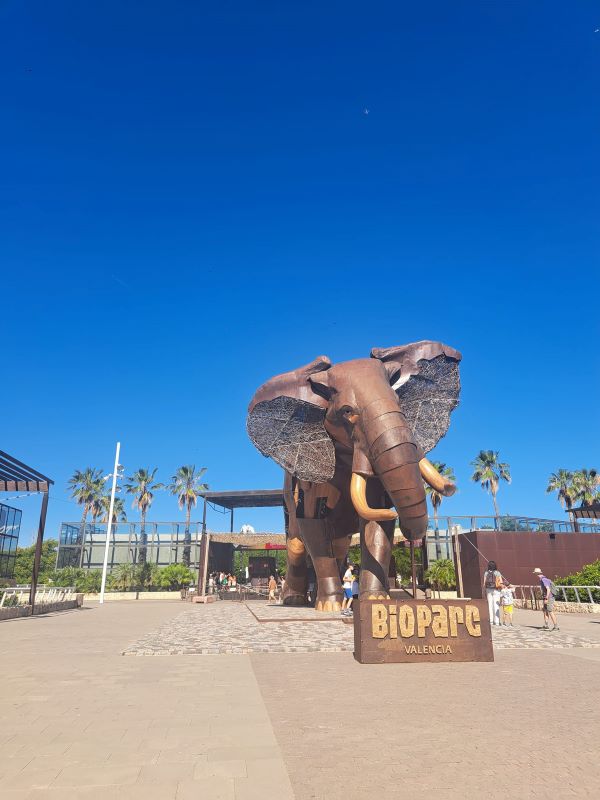
B. Bioparc Valencia
Bioparc Valencia is an innovative zoo experience located near the Turia Gardens, where animals live in environments that closely mimic their natural habitats. The layout is designed to be immersive—barriers are hidden so you feel like you’re walking right into the African savannah, tropical forest, or amphibian world. It really stands out for its commitment to conservation and education; you can learn about endangered species and watch guided feeding sessions or keeper talks that give insight into both animal behavior and preservation efforts. A nice pro is how thoughtfully the park has been landscaped—water features, vegetation, and open spaces create a calm, natural atmosphere. One downside is that since it’s quite popular, the pathways can get crowded during weekends or peak tourist times. Still, for anyone interested in wildlife and environmentally minded attractions, Bioparc offers an engaging, ethical, and enjoyable experience.
- Immersive zoo designed to resemble natural habitats
- Good for families and animal lovers
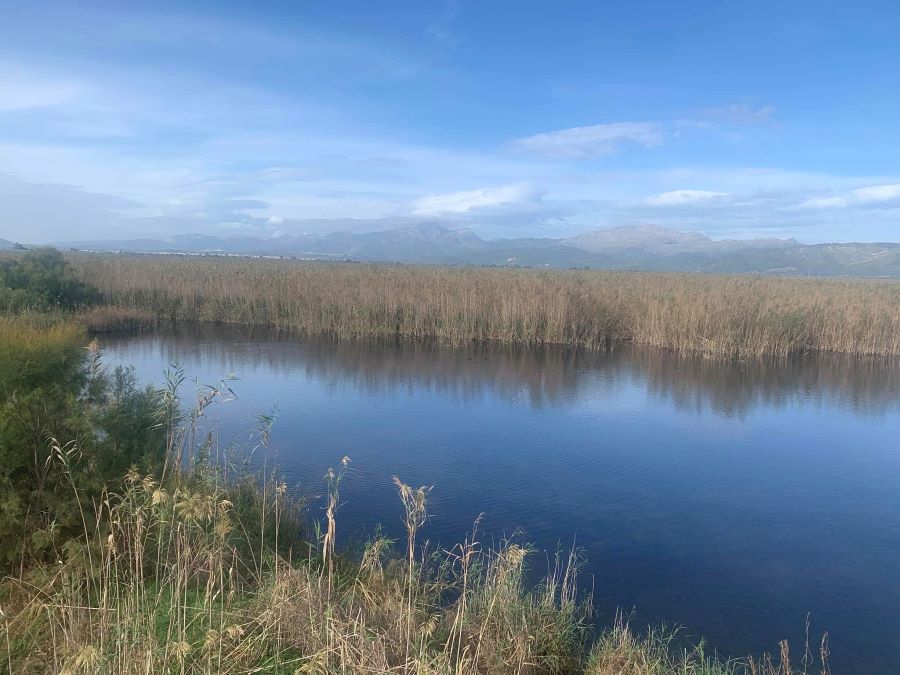
C. Albufera Natural Park (30 minutes from city)
Albufera Natural Park, located just a short drive south of Valencia, is a lush wetland reserve centered around a large freshwater lagoon that was once part of the Mediterranean Sea. Whether you’re gliding across its mirror-like waters on a traditional wooden boat, strolling along reed-lined trails, or birdwatching from a hidden hide, the park’s diverse ecosystem of rice fields, shallow marshes, and pine forests offers a peaceful escape from city life. It’s a key spot on migratory bird routes and home to flamingos, herons, and countless other species, as well as a vital atelier for traditional paella rice cultivation. You can stop at one of the family-run waterfront restaurants to savor authentic paella made with locally grown rice. The mix of natural beauty, wildlife, and cultural tradition makes Albufera feel both calm and authentically Valencian—though weekends can be busy, the space still retains a laid-back, pastoral charm.
- Rice fields, birdwatching, boat rides at sunset
- Birthplace of paella
IV. Hit the Beaches
The beaches in Valencia are expansive with wide sandy beaches, paved walking promenades and bars and restaurants located all along the beach areas for hang out and dining venues around the beach areas. I loved biking through this area and checking out the various beaches to explore here with these attractive beaches to enjoy.
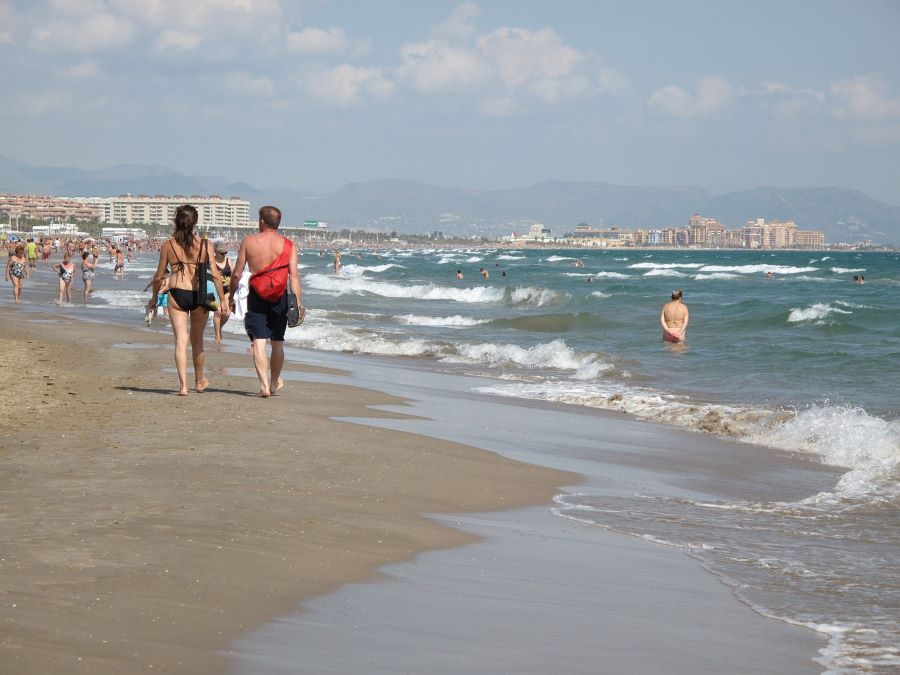
A. Playa de la Malvarrosa
- Wide city beach with boardwalk and restaurants
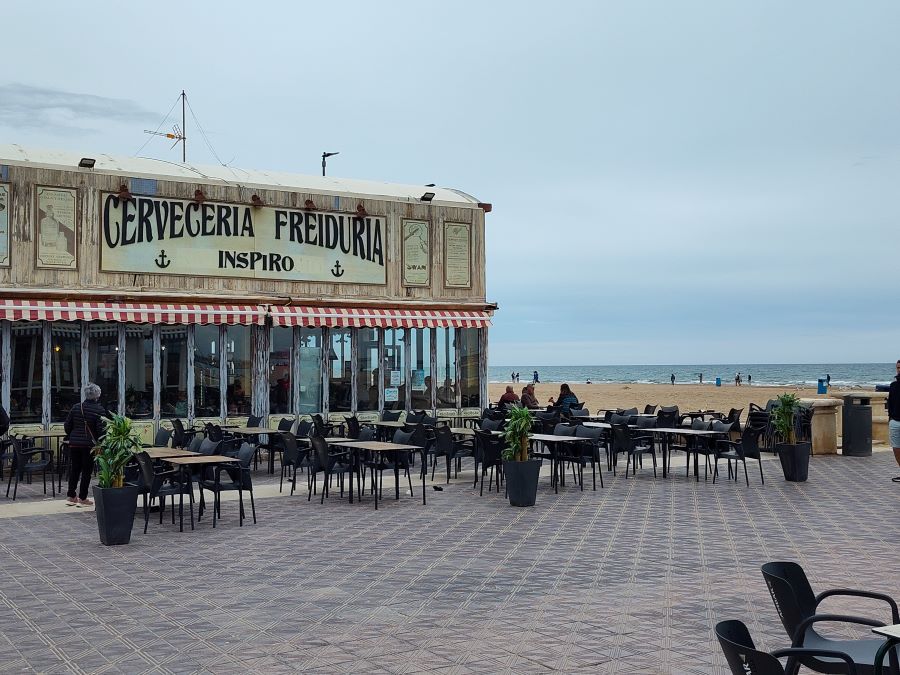
B. Playa de las Arenas
- Closer to the marina, good for sunbathing and drinks
C. Patacona Beach
- More local vibe, chill and slightly outside the center
V. Taste the Local Food
If you are looking to sample some of the local food and specialty dishes from Valencia, check out these regional foods and other products or delicious dishes you might find in the local markets or restaurants in town.
1. Paella Valenciana
- Traditional rice dish native to the region
- Made with chicken, rabbit, green beans, sometimes snails
- Cooked in a wide, shallow pan over open flame
2. Fideuà
- Similar to paella but made with short noodles instead of rice
- Usually includes seafood like cuttlefish, squid, and prawns
- Often served with alioli (garlic mayo)
3. Esmorzaret (Mid-morning snack tradition)
- Popular local ritual around 10–11 am
- Sandwiches filled with options like tortilla, cured meats, fried squid
- Typically paired with olives, peanuts, and a beer or vermouth
4. All i Pebre
- Stew made with eel, potatoes, garlic, and paprika
- Originated in the Albufera region
- Rich and garlicky with a rustic flavor
5. Clóchinas
- Small, tender Valencian mussels
- Steamed with lemon, bay leaves, and pepper
- Seasonal: best from May to August
6. Horchata de Chufa with Fartons
- Sweet, refreshing drink made from tiger nuts
- Served cold, especially in summer
- Paired with fartons – soft, sugar-coated pastries perfect for dipping
VI. Day Trips from Valencia
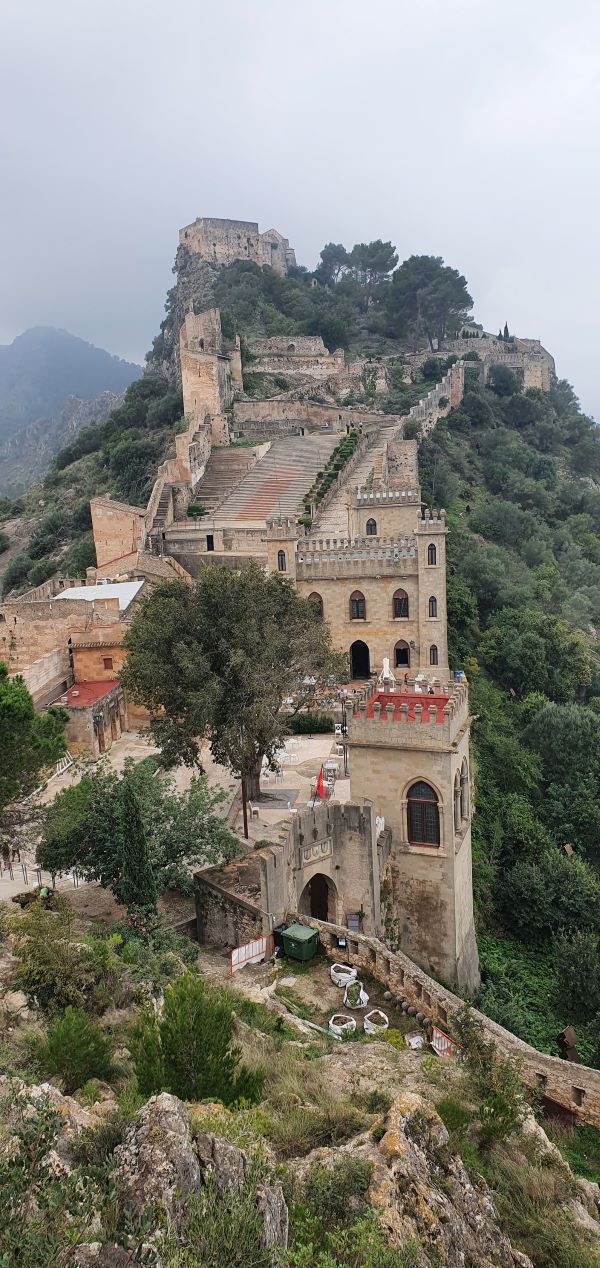
A. Xàtiva Castle
Xàtiva Castle sits high on a ridge overlooking the town of Xàtiva, offering panoramic views of the surrounding countryside. This twin-fortress complex stretches along a hilltop and blends Roman, Moorish, and medieval architecture. You can wander through ancient towers, crumbling walls, and courtyards that echo the region’s layered history. It’s a bit of a hike to reach the top if you go on foot, but the scenery and historical setting make it worthwhile. The site is peaceful, scenic, and gives a strong sense of the area’s strategic importance through the centuries.
- Impressive hilltop fortress with deep historical roots
B. Requena
Visiting Requena is like stepping into a quieter side of Valencian life, where the focus turns from the coast to wine, history, and old-world charm. This hilltop town is famous for its centuries-old underground wine cellars carved into the soft rock—touring these cool, dim tunnels while sampling local reds and clarets is an unforgettable experience. Above ground, the cobbled streets wind between medieval and Gothic buildings, centered around a dramatic Plaza del Alcalde where cafés spill out onto the stone pavement. You might catch a local feria, see ancient churches like Santa María, or wander the fortress ruins for panoramic views over vineyards and olive groves. For food, Requena shines with hearty dishes that pair perfectly with regional wines—think slow-cooked stews and artisan cheeses. It’s a laid-back, authentic escape that blends rustic traditions with approachable elegance.
- Wine-producing region with underground caves
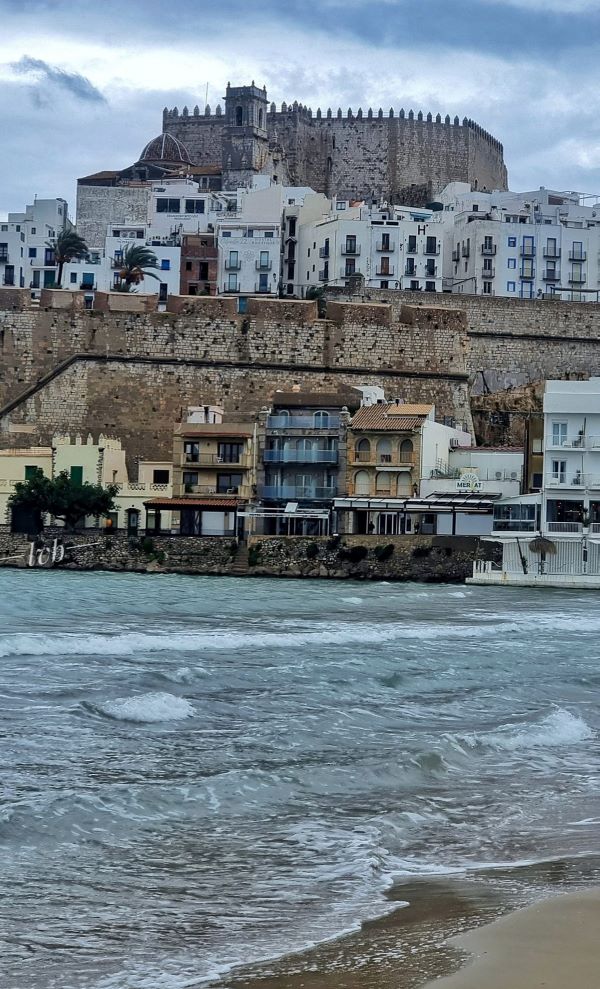
C. Peñíscola
Visiting Peñíscola feels like discovering a coastal town where history and beach life meet effortlessly. Its old town rises above the sea on a rocky headland, crowned by the impressive Papa Luna Castle, once a papal residence with sweeping views of the Mediterranean. Winding stone streets, whitewashed houses, and small local shops give the area a timeless charm, while just below, long sandy beaches and a palm-lined promenade stretch out for sunbathing, swimming, or grabbing seafood by the water. It’s an easy place to slow down—whether you’re exploring the castle’s history, wandering the medieval walls, or just enjoying the mix of relaxed atmosphere and scenic coastal beauty.
- Coastal town with a castle used in Game of Thrones
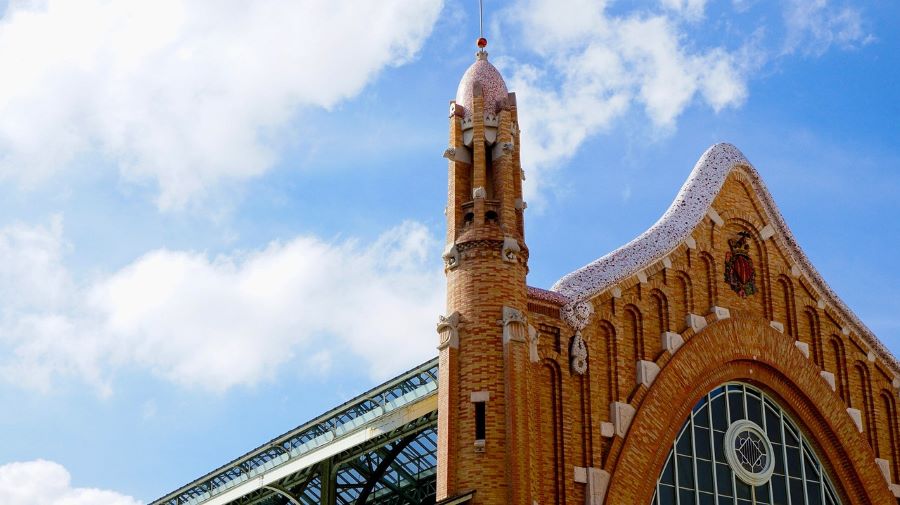
Further reading: Visiting Valencia and region
Explore the Central Market of Valencia
A visit from Barcelona to Valencia
Specialty foods and markets in Valencia
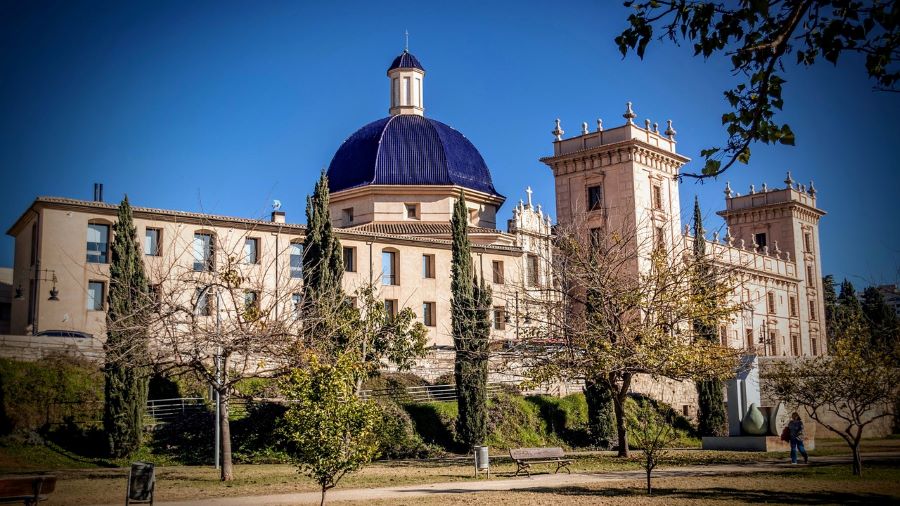
Wrap up on visiting Valencia Spain
Visiting Valencia offers a rewarding mix of history, design, food culture, and Mediterranean charm. Whether you’re walking through its old town, enjoying paella where it was born, or exploring the cutting-edge City of Arts and Sciences, the city delivers a memorable experience with a pace that’s both relaxed and full of life. If you’re looking for a destination that blends heritage and innovation without the overwhelm of bigger cities, Valencia is well worth adding to your list. Start planning your trip and see how easy it is to fall into the rhythm of this underrated Spanish gem.
Thanks for checking out the post on Visit Spain and Mediterranean, please do check out all the other topics that may interest you on the website.

About author – Noel Morata
After relocating from the United States to Andalusia in 2020, I’ve made it my mission to discover every corner of Spain. Based just east of Granada, I’ve spent over 12 months exploring Valencia province and the rest of Spain, including multiple extended visits to Valencia throughout different seasons. My background in Spanish cultural studies and five years of residence in southern Spain have given me unique insights into the region’s historical significance, local customs, and culinary traditions.
I regularly update my guides with the latest information gathered through personal visits and relationships with local tourism officials, always seeking what’s new and exciting in each destination. As a self-proclaimed foodie, I’m passionate about discovering authentic local markets and regional specialties.
Disclosure – some of the links above to various tours, transportation and hotels are affiliate links that benefits our site if you book here and we appreciate your support. The links are competitive, and you are not paying above what other affiliates provide.
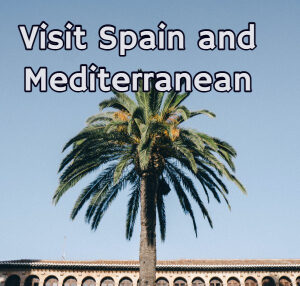

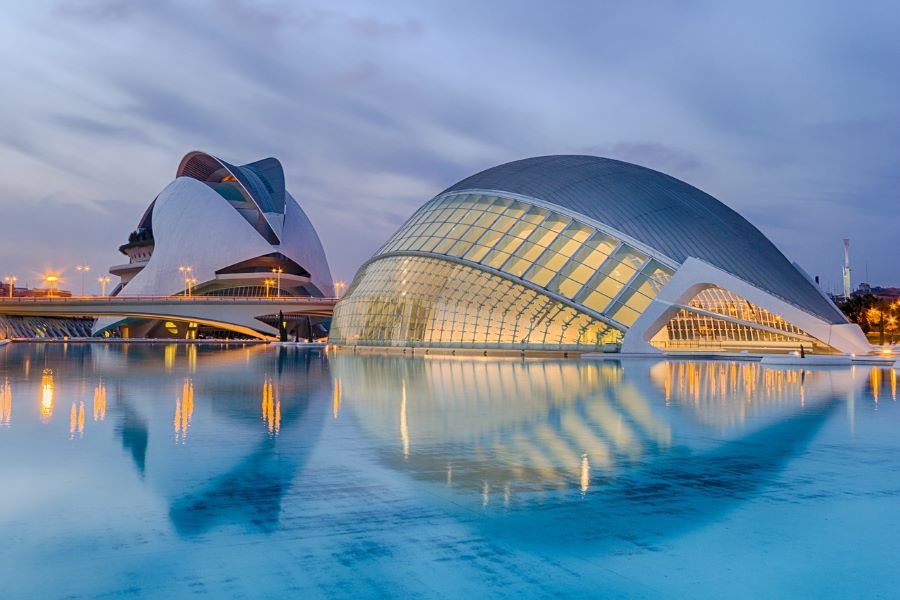
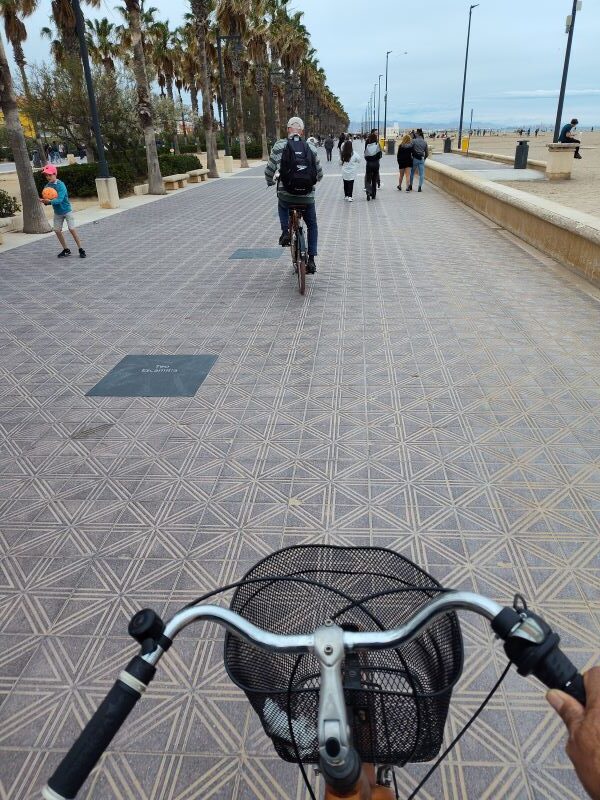
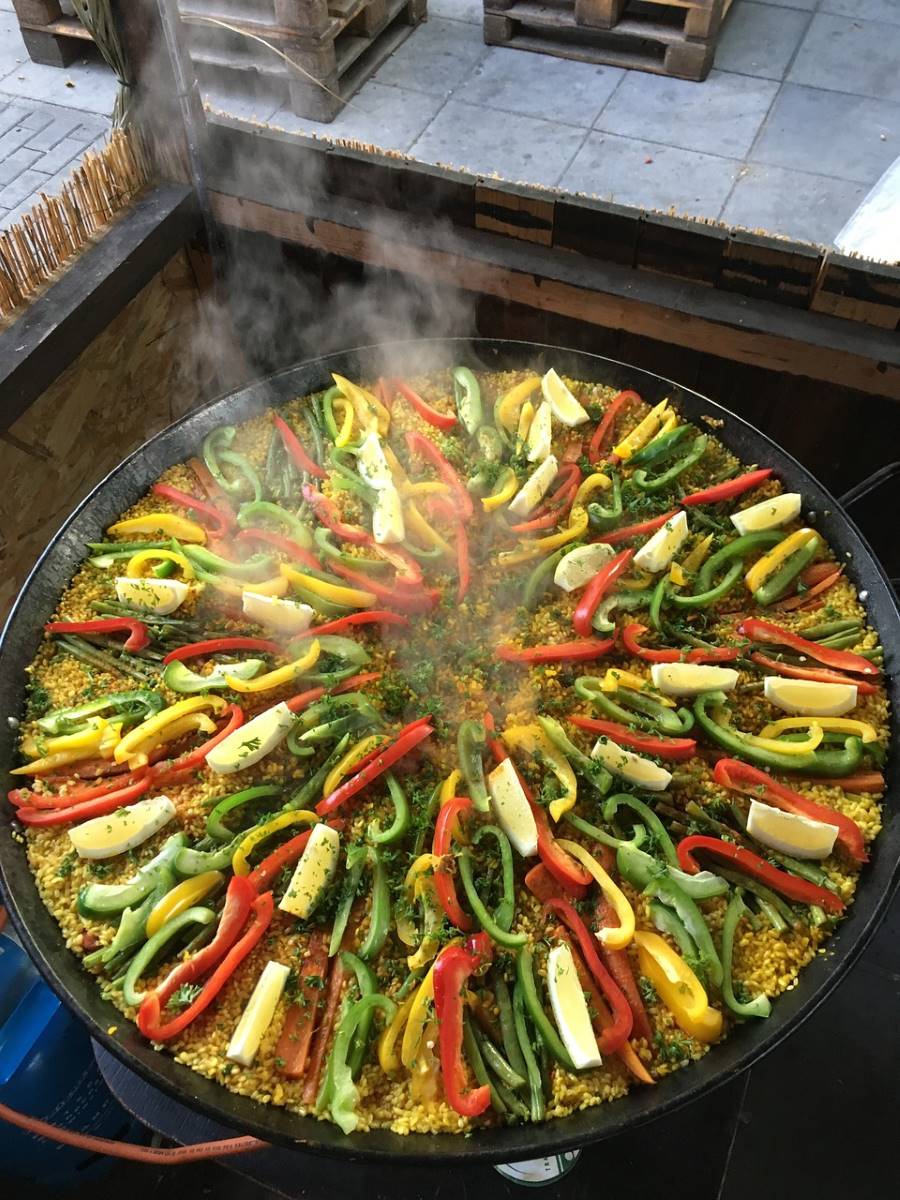
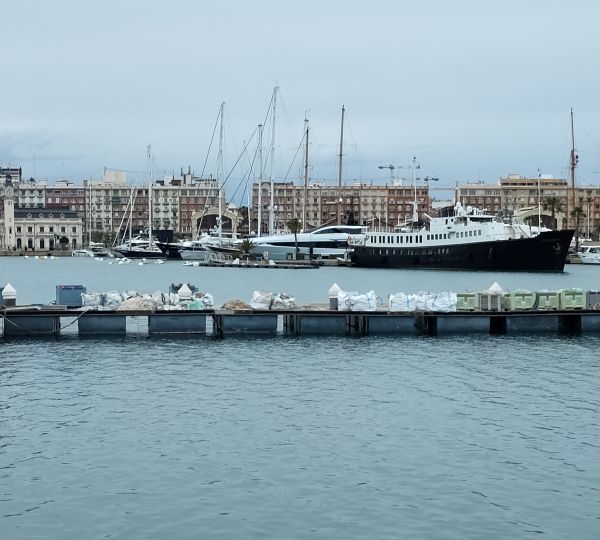
1 thought on “Valencia attractions”